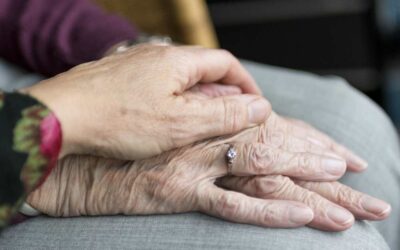On August 6, 2020 Maryland’s Ways and Means Committee gave a briefing featuring updates from the Education Subcommittee. Hear updates on education and student discipline equity in Maryland from the Maryland Department of Education, the Maryland State Longitudinal Systems Center, and Strong Schools Maryland. Read the highlights below, or download the full briefing notes.
Mary Gable, Assistant State Superintendent
Maryland State Department of Education
Equity in Student Discipline
Definitions: “Out-of-School Suspension” and “Expulsion”
- “Out-of-school suspension” (OSS) means the removal of a student by the principal for disciplinary reasons from the student’s current educational program to another setting.
- “Expulsion” means the exclusion of the student from the student’s regular school program for 45 school days or longer.
- Out-of-school suspensions and expulsions together constitute “removals”
- Suspensions are considered legal absences and thus suspended students must be given access to make-up coursework, and students should be given full credit for coursework in line with school system policies regarding completion of work for credit following excused absences.
- A student may not be suspended solely for attendance-related issues.
Suspension and Expulsion.
(1) Prohibition.
- … a student enrolled in a public prekindergarten program, kindergarten, first grade, or second grade may not be suspended or expelled from school.
- A student described…above…may only be:
- Expelled from school if required by federal law; or
- Suspended for not more than 5 school days per incident if the school administration, in consultation with a school psychologist or other mental health professional, determines that there is an imminent threat of serious harm to other students or staff that cannot be reduced or eliminated through interventions and supports.
- The principal or school administration shall promptly contact the parent or guardian of a student suspended or expelled under this regulation.
Dr. Dara Shaw, Executive Director, Office of Research
Maryland State Department of Education
Definition: Arrests
- COMAR 13A.08.01.12 –Arrests on School Premises requires local school systems to report data on arrests and referrals to law enforcement agencies or the Department of Juvenile Services (DJS) annually.
- Student arrests are arrests that occur as a result of a physical arrest or a paper arrest/student referral to law enforcement or to the Department of Juvenile Services (DJS) by school personnel for a disciplinary-related offense that was committed on school property or at an off-campus school activity.
- Offenses that occur in the community or away from school are known as “reportable offenses.” Reportable offense should not be included in the student arrests data collection.
- “Arrests per 1,000 students” is the number of arrests in a school year divided by students enrolled at the beginning of that school year.
Suspension and Expulsion –MSDE Key Initiatives
- Positive Behavioral Interventions and Support (PBIS): A framework that guides the selection, integration, and implementation of evidence-based practices for improving academic and behavioral outcomes for all students.
- Restorative Approaches: A relationship-focused student discipline model that is primarily preventative and proactive; emphasizes building strong relationships and setting clear behavioral expectations; focuses on accountability for harm caused by problem behavior; and addresses ways to repair relationships.
Includes conflict resolution, peer mediation, circle processes, restorative conferences, social emotional learning, trauma-informed care, PBIS, rehabilitation.
- Trauma-Informed Care: Programs that address the impact of trauma on students by recognizing the signs and symptoms, builds pathways to recovery, integrates knowledge about trauma into policies, procedures, and practices, and seeks to resist re-traumatization.
- MSDE direct support to school systems and schools on disproportionality:
- Worked directly with local school systems to facilitate completion of action plans for the 14 local school systems with schools identified as disproportionate.
- Provided direct coaching with principals at several identified school systems to facilitate a change in behavior practices.
- Provided support to disproportionate discipline review teams in all 24 local school systems and created a discipline practice audit for each system.
Suspension and Expulsion –Local School System Key Initiatives
- Local school system focus on disproportionality:
- Schools are engaged in a focus on diminishing disproportionality.
- Root cause analysis (school system-wide and school-specific) was conducted.
- Coordination and collaboration exists among system level divisions and initiatives.
- Principals, principal supervisors, and school intervention teams engage in continuous dialogue about behavior interventions which are school wide, classroom specific, and for individual students.
- Effective multi-tier systems of supports (e.g. PBIS) for behavior based upon classroom and office discipline referral data are being implemented.
- Several local school systems have developed data dashboards to allow school leadership teams to frequently examine student behavior data.
Q&A
Delegate Eric Ebersole: Last year we passed legislation to prohibit suspensions from Pre K – 2. The data shows there has been a 50% decrease. I’m surprised the numbers are running where they are still. We went from about 4000 a year to about 2000 a year I expected a more significant drop given The nature that we wrote that bill. Do you have any insight as to why the number would remain relatively high?
Mary Gable: We also have been looking at the data over time. We are also taking a look at the reasons for the suspension. We are reviewing and redoing the guidelines regarding discipline and there have been numerous conversations to your point. These are suspensions for Pre K – 2. We’ve looked at the reasons for the suspensions. The superintendent and school staffs are also looking at the reasons to address some of that and provide training to their teams.
Delegate Eric Ebersole: Are you getting cooperation from the locals on working with you on that? Do you have any kind of timeline?
Mary Gable: A major thing was really looking at this, to sit down and have a discussion. We are making a commitment because things occur and until you see all the data combined. We are certainly expecting reductions in that area.
Dara Shaw: At our June state board meeting we presented very similar data, but very specifically for Pre K – 2 looking at the impact of the legislation. Looking at the numbers of suspension incidences before and after legislation was passed. You were correct, it is half. It went from about 2500 suspension incidences to about 1200.
Delegate Michele Guyton: I wanted to ask you about kids that are currently in the process of the disciplinary system when we went into the shutdown. Those kids now 5 months later, are they still if they haven’t yet been expelled or suspended. Where are the kids in that process? Are there guidelines for interventions that are going to occur during virtual learning this fall? Or are they suspended from e-learning or just forgiven? Are there any guidelines or discussions around those things?
Mary Gable: I don’t know about guidelines; I can tell you absolutely that it has been a discussion with directors of student services that we have been meeting with weekly since schools close. I would think that in discussing with 24 directors of student services, they were all like let’s get that suspension closed. On expulsion, I would expect the school systems were addressing those and identifying what kind of services would be provided to those students and where that status is.
Delegate Alonzo Washington: When can we have the information on Pre K – 12? I think that will be telling to us. If students are getting out of school suspensions and expulsions for nonviolent offenses that doesn’t sound right to me.
Dara Shaw: We can have that information brought back here to get a report. For 2019 about half of suspension and expulsions were due to fighting, 35% were due to disruption or disrespect. Then there are smaller shares for things like weapons or dangerous substances.
Delegate Alonzo Washington: Can we get the breakdown of those categories, then breakdown by race as well? I didn’t hear any alarms ring from you guys when you went through those numbers of arrests and the breakdown in race and how African Americans are overidentified in those categories. There seems to be no alarms in what we need to do or what interventions need to happen in these school districts. I want to know what are the interventions that are occurring when we see these numbers at such a high level of African Americans being disproportionately in arrest and suspensions too.
Dara Shaw: Working with research I have my statistics hat on, we are presenting the information to you in as clear away as we possibly can to get your questions answered. It doesn’t mean we are dispassionate about the information.
Mary Gable: There is posted on our website a delineation of all expulsions and suspensions every year by reason. That data is broken down by race, cause, gender, level, and that data is regularly posted on our website. We are calling attention to this data and it is clear by the data what the issues are. We are doing work in the schools on disproportionality, we are doing work on racial bias. There is someone on my team that is working with schools, specifically on that issue.
Delegate Alonzo Washington: That sounds great but the numbers have been the same for the last five years now, and they have not changed. There must be something that we are not doing to drive down those numbers and that disproportionality. I just urge that MSDE find solutions to these issues, and I’m looking forward to working with you.
Ross Goldstein, Executive Director
Maryland State Longitudinal Systems Center
WHAT does the MLDS Center do?
- Independent state agency that develops and maintains a data system containing student and workforce data from all levels of public education and the State’s workforce.
- Generate timely and accurate information about student performance that can be used to improve the State’s education system and guide decision makers at all levels.
Discipline Data Elements
- Added to the MLDS Inventory in September 2019.
- Data goes back to Academic Year 2007-2008.
- Elements include:
- 504 Indicator
- Offense Code
- Disposition Code
- Physical Injury
- Disability Code
- Date of Offense
- Length of Removal
- Type of Educational Services Provided
Juvenile Services Data
- Currently MLDS Governing Board has approved identity data elements for initial testing and analysis of matching capabilities.
- Next step is to propose to the Governing Board the inclusion of the following categories of data elements from DJS (approximately 40 proposed elements):
- Jurisdiction of residence
- Intake decision
- Disposition Information
- Placement name and type
- Offense code, category and date
- Adjudication Information
- Supervision begin and end date
- Placement admission and release reason
Longitudinal Data
- Discipline and Juvenile Services data in the MLDS allows for research and reporting on long term outcomes of students who are subject to disciplinary actions and/or the Juvenile Justice System.
- Long term outcomes include:
- High School Graduation
- Enrolling in College
- College Persistence and Graduation
- Workforce engagement and earnings
- Research can look into different interventions and how successful they are.
- Provides DJS with additional outcome measures of their student population.
Dr. Angela Henneberger, Research Branch Director
Maryland State Longitudinal Systems Center
MLDS Research
- Past Research – Kirwan Commission
- Importance of Discipline and Juvenile Justice Data
- Future Projects:
- Positive Behavioral Interventions and Supports (PBIS) – evaluation of long term outcomes.
- Along with MSDE and DJS, research on the effects of:
- School discipline guidelines on suspension and student performance
- Influence of suspensions on educational attainment; and
- School discipline and use of school resource officers on juvenile arrests
- Juvenile Justice involvement on academic and workforce outcomes.
Q&A
Delegate Alonzo Washington: When are you going to start on those feature projects? They all seem very interesting.
Angela Henneberger: Right now we are submitting grants to The Institute of Education Sciences to fund these projects.
Delegate Alonzo Washington: You mentioned the School-to-Prison Pipeline project that you’re formulating, is that one that you can help us with before the beginning of session?
Angela Henneberger: Yes absolutely, right now we are waiting for the data. I’m more than happy to forefront that research if it is useful to the committee.
Ross Goldstein: We expect the governing board to approve the remaining additional data elements in September’s meeting. So once that happens I think we can move relatively quickly to incorporate that data. We can meet with you separately and really drill down with the research questions and frame out what you want. We can focus both the research efforts and the data loading efforts to prioritize the information that you want.
Delegate Stephanie Smith: As we’re discussing the School-to-Prison Pipeline. Do we have any data sources relating to suspension rates and backgrounds of either officials at the school or teachers that are initiating those?
Angela Henneberger: I’m not completely sure that we’re able to actually link the teacher with the student in terms of which teacher actually disciplined the student. One thing we could think about is school diversity in terms of the total teacher population, to think about maybe the proportion of teachers who are minority or the proportion of staff or principals and higher level administrators who are minorities and whether discipline might be lower in those schools compared to those without as much teacher or staff diversity.
Shamoyia Gardiner, Deputy Director
Strong Schools Maryland
- Maryland’s teaching force is overwhelmingly white & female. Students are not.
- Asian 6.6%
- Black 33.1%
- Latino 19.4%
- Native American 0.3%
- Pacific Islander 0.1%
- White 35.6%
- In the 2018-2019 school year, Maryland public schools suspended and expelled nearly the equivalent of the Eastern Shore’s student population.
- That’s more than the combined enrollment of Allegany, Caroline, Dorchester, Garrett, Kent, Queen Anne’s, Somerset, Talbot, Wicomico, and Worcester counties.
Disparities Abound
- Male-identified students comprise 51% of total enrollment
- 67% of those subject to exclusionary discipline
- Black students comprise 33% of total enrollment
- 57% of students subject to exclusionary discipline
Students with intersecting identities are pushed out more
- Students with educational disabilities comprise 12% of total enrollment
- 24% of students subject to exclusionary discipline
- Black students comprise 58% of students with disabilities subject to exclusionary discipline
- Male-identified students comprise 76% of students with disabilities subject to exclusionary discipline
Maryland has cultivated an arrested student population that is reminiscent of its carceral population.
- 67% male-identified
- 56% Black students
- 23% students with educational disabilities
- The School-to-Prison Pipeline isn’t something to be averted in Maryland–it needs active undoing because it is functioning right now.
The existence of an officer on school premises is closely correlated with increased student arrests.
- Complete 84% of arrests (91% when police officers assigned to schools are included).
- Wrote more than half of all student referrals to DJS–which fails to produce intended results.
Most arrests don’t contribute to long term student safety, but do cause long-term impacts.
- 67% of students ultimately sent back to school
- 20% with unrecorded outcomes
- 11% of students sent to alternative school placements*
- Ignores clear, immediate student needs
- Increases likelihood of future contact with carceral and criminal justice systems
Alternative School Models
- A variety of models exist and prioritize various student populations and circumstances.
- Unique curricular and instructional approaches
- Needs and interests of students
- Career themes and professional relevance
- Experiential learning
- Student behavior-focused alternative schools yield poor academic and long-term outcomes for students.
- enrollment in a behavior-focused alternative school significantly predicts earning fewer credits in one semester, lower attendance, and a lower number of office referrals. (Wilkerson, et. al 2016)
Recommendations
- Legislative Actions
- Override the veto of the Blueprint for Maryland’s Future–it builds on an existing framework for pursuing restorative practices as alternatives to exclusionary discipline, diversifies the educator workforce, prepares them to meet actual student needs, and identifies funding to meet its objectives.
- Revisit/create legislation to create a thorough definition of alternative schools, required MSDE to collect specific data about operations and outcomes from local school systems, and bolster accountability and oversight.
- e.g., HB1022 from the 2020 session
- Revisit legislative recommendations from the 2018 report from the Commission on the School-to-Prison Pipeline and begin the process of adoption.
Q&A
Delegate Eric Ebersole: I’m curious to know if SRO’s are acting as an arm of DJS and law enforcement are following through and arresting kids at their order, or are we finding more when SRO’s are involved it’s more administratively motivated? Who is telling them what to do?
Shamoyia Gardiner: It’s difficult to answer with 100% certainty. What the data suggests is that SRO’s, since they are ones completing a majority of the paper referrals in particular which is how most students get arrested in schools it seems to me that they are leading there. I’ve also heard from specific SRO’s that sometimes they are directed to do certain things by school based personnel.
Delegate Alonzo Washington: We know that SRO’s are arresting students, but can you speak to how they are involved in school discipline practices?
Shamoyia Gardiner: It’s difficult to answer because I don’t know that we have very much about the role of SRO’s delineating where their responsibilities end and where other school based personnel step in on discipline.
Delegate Alonzo Washington: Can anyone speak to research you’ve done on school suspension and graduation rates?
Angela Henneberger: To date we have not done any research on the correlation of school suspension and graduation rates. It is in part of our research plan with what I spoke of earlier with the School-to-Prison Pipeline. Once we get more of the data loaded into the system.




